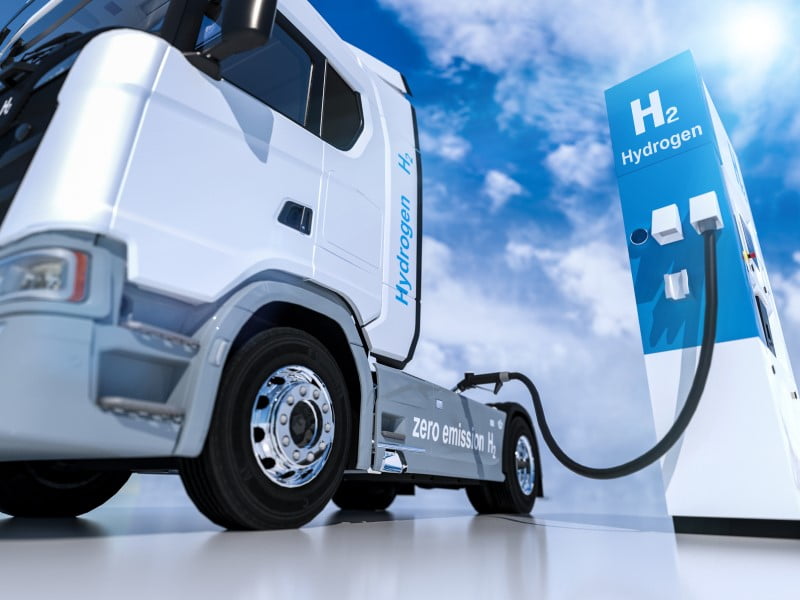The three eastern seaboard states have made a start on a project to build a “renewable hydrogen” highway, with the state governments of Queensland, New South Wales, and Victoria signing an agreement to develop hydrogen refueling infrastructure for heavy trucking.
The memorandum of understanding signed on Friday is for the development of a hydrogen refueling network for heavy transport and logistics by 2026. Work will centre on the Newell Highway, that links Queensland and Victoria, the Hume Highway between New South Wales (NSW) and Victoria, and the Pacific Highway between Queensland and NSW.

The agreement begins with the Hume Hydrogen Highway grant program run between the NSW and Victorian governments. Both states have committed $10 million each, which is sufficient for at least four refueling stations and support for 25 hydrogen-powered long-haul heavy freight vehicles. Grant applications under this program will open around mid-2022.
Queensland Minister for Energy, Renewables, and Hydrogen Mick de Brenni said the collaboration presented both emissions reduction and fuel security opportunities.
“When you consider the impacts of the COVID pandemic and international conflicts, it’s clear Australia must achieve energy independence, to shield our nation from foreign companies and foreign powers,” Minister de Brenni said.
“Low emissions electricity and hydrogen fueled heavy transport will sit at the heart of the renewable energy eco-system. Transport is the fastest growing sector for emissions and ironically it could also be the key to reducing them.
“Transport applications are one of the most economic uses of hydrogen, where it is already competitive with diesel on a cost-of-fuel basis. However, Government support is needed to help develop refueling stations so transport companies can economically invest in new vehicles.”
NSW Minister for Energy Matt Kean said the project on Australia’s busiest road freight routes was a significant step in the decarbonising the heavy transport industry. He added that renewable hydrogen “will increasingly become a competitive zero emissions fuel option for our heavy transport sector.”
Similarly, the Victorian Minister for Energy, Environment, and Climate Change Lily D’Ambrosio said the tristate collaboration would revolutionise the heavy industry sector.
“The renewable hydrogen highway will create new jobs, drive investment across the east coast and is a landmark step towards meeting Victoria’s target to halve emissions by 2030 and reach net-zero by 2050,” Minister D’Ambrosio said.
“This historic collaboration between Victoria, New South Wales and Queensland will revolutionise Australia’s busiest freight corridor, lighting a pathway to a zero-emissions transport sector.”
This announcement supports the NSW hydrogen strategy and the hydrogen industry development plans of Queensland and Victoria. Last month, the Commonwealth also incorporated support for hydrogen vehicles into its Future Fuels and Vehicles Strategy which initially only targeted electric vehicles when announced in November 2021.
Australian Hydrogen Council (AHC) chief executive officer Dr Fiona Simon expressed the representative body’s excitement over the tristate collaboration and said it looks forward to helping industry plan its next steps.
“This delivers the next phase of the three governments’ hydrogen strategies and is a terrific example of the cross-jurisdictional efforts we need to see to grow the industry for Australia. It is also consistent with the AHC’s recommendations to governments in its White Paper where we asked for refueling stations on the Hume and government support to get hydrogen trucks on the road,” Dr Simon said.
“Transport operators and vehicle manufacturers see the carbon reduction potential in using hydrogen but there has been a number of barriers including a lack of refueling infrastructure. Today’s announcement will help them move one step closer to transitioning to lower emissions fleets.
“We know this announcement is the result of months of hard work and coordination, as well as terrific engagement with industry to consider options and map next steps.”
The NSW, Victorian, and Queensland governments are aiming to reduce carbon emissions, based on 2005 levels, by 50 per cent, 45-50 per cent, and 30 per cent respectively. With regards to renewable energy adoption, the Victorian and Queensland governments want 50 per cent of energy produced to come from renewable sources by 2030. NSW is not targeting for a specific proportion of its energy to come from renewables but is aiming to have an annual hydrogen production of 110,000 tonnes by 2030.
Earlier this week, the Queensland government announced a $28.9 million investment into a hydrogen refueling facility, which brings the total number of hydrogen projects being delivered or developed in the state to five.
The Commonwealth also has a larger goal of lowering hydrogen prices to less than $2 per kilogram. Research from the Australian National University in 2020 found that green hydrogen could plausibly be produced at the target price in the next decade if production costs continue to fall.
Do you know more? Contact James Riley via Email.


Hi – does anyone know if these refueling stations will dispense compressed hydrogen gas or cryogenically liquefied hydrogen gas? Or both perhaps?